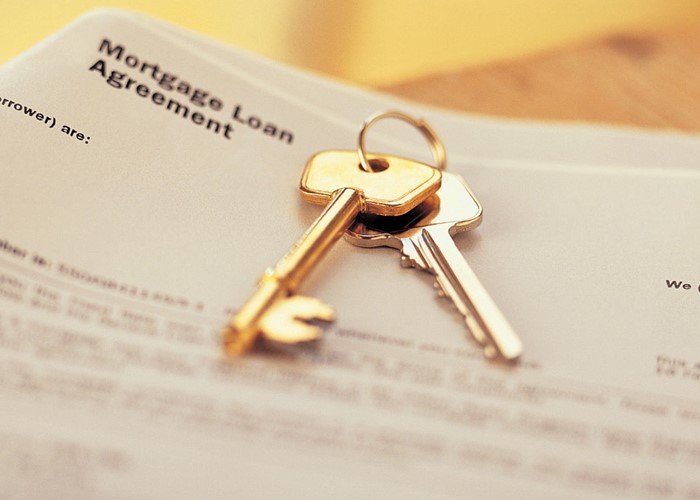Help to Buy figures suggest scheme most useful outside of London

New figures may calm fears over the controversial Government scheme.
The Help to Buy scheme has enabled 27,861 mortgage completions, according to new figures published by the Treasury.
A total of 20,548 went through between 1st April 2013 and 30th April 2014 in England using the equity loan side of the scheme.
7,313 were supported between 8th October 2013 and 31st March 2014 under the mortgage guarantee part of the scheme, available across the UK.
What is Help to Buy?
The Help to Buy: equity loan and Help to Buy: mortgage guarantee schemes were launched by the Government last year to help those with small deposits get onto or move up the property ladder.
The equity loan side of the scheme launched in April 2013 in England, September 2013 in Scotland and January 2014 in Wales. It allows people with small deposits to buy a new-build home worth up to £600,000 in England, £400,000 in Scotland or £300,000 in Wales.
Buyers need at least a 5% deposit to put down, which is boosted by a Government equity loan worth up to 20% of the property‘s value. The rest of the purchase price is covered by a special Help to Buy Equity Loan mortgage available from a participating lender.
The mortgage guarantee side of the scheme was launched nationwide in October 2013. People with small deposits can purchase any type of property (not just a new build) up to a value of £600,000 across the UK.
Buyers again need at least a 5% deposit to get a special Help to Buy mortgage from a participating lender. But this time the Government acts as a guarantor on the mortgages offering the reassurance to lenders that it will step in should a borrower default.
Read more in: Help to Buy mortgages explained and The best Help to Buy mortgages.
Compare mortgages with lovemoney.com
Mortgage guarantee: what the figures show
The figures from the Treasury are significant as they contain the first substantial set of data for the nationwide mortgage guarantee side of scheme.
The numbers show that of the 7,313 completions over the six-month period, 80% were made by first-time buyers.
The total household income for the majority of completions ranged between £20,001 and £50,000, while the average cost of a property acquired using the scheme was £151,597 compared to an average UK house price of £252,000 according to the Office for National Statistics.
Interestingly almost half of the completions on the scheme were skewed toward properties worth £125,000 or less, while just over 7% of mortgage completions were on properties worth £250,000 or more.
There had been fears that Help to Buy would simply add to the housing bubble currently enveloping London, but encouragingly the capital accounted for just 5% of deals. The Treasury suggests this is a sign that Help to Buy is helping areas where the recovery has previously been weakest. The table below shows how all regions of the UK benefitted.
|
Region |
% of total mortgage guarantee completions |
|
Scotland |
13% |
|
Wales |
5% |
|
Northern Ireland |
1% |
|
England |
81% |
|
-South East |
14% |
|
-London |
5% |
|
-North West |
14% |
|
-South West |
8% |
|
-Yorkshire and Humber |
9% |
|
-West Midlands |
8% |
|
-East midlands |
9% |
|
-North East |
4% |
|
-East |
9% |
Source: HM Treasure
Compare mortgages with lovemoney.com
Fears calmed
The Help to Buy scheme has given rise to a number of concerns about it accelerating house price inflation. The Business Secretary Vince Cable is among those who have argued that Help to Buy could end up doing more harm than good.
The Office for National Statistics recently reported UK house prices had increased 8% over the past year. For more read: What's happening to house prices?
However, leading analysts are agreed that the figures released by the Treasury around Help to Buy equity loans in England and mortgage guarantees nationwide show that the scheme isn’t to blame for encouraging the rises.
In fact analysis of the data by the Council of Mortgage Lenders (CML) suggests that the combined Help to Buy schemes only account for 4% of all mortgages between April 2013 and April 2014, which means its impact has so far been modest.
CML Director General Paul Smee said: “Throughout the UK, the proportion of business accounted for by Help to Buy has to date been modest overall. Any worry that the scheme risks stoking a housing boom fortunately does not seem to be playing out in practice so far."
There are signs now that the supply of new homes - one of the biggest factors stoking house price inflation- is being eased. Private house building is up 34% since the launch of Help to Buy and 74% of homes bought through the scheme were new-build properties.
House builders welcomed the role Help to Buy has played in boosting supply. Home Builders Federation Executive Chairman Stewart Baseley said: “The Help to Buy Equity Loan scheme is supporting demand for new build homes - and if buyers can buy, builders can build.”
Compare mortgages with lovemoney.com
More on buying a home:
How to deal with property chain problems
Seven reasons mortgage lenders turn you down
Comments
Be the first to comment
Do you want to comment on this article? You need to be signed in for this feature